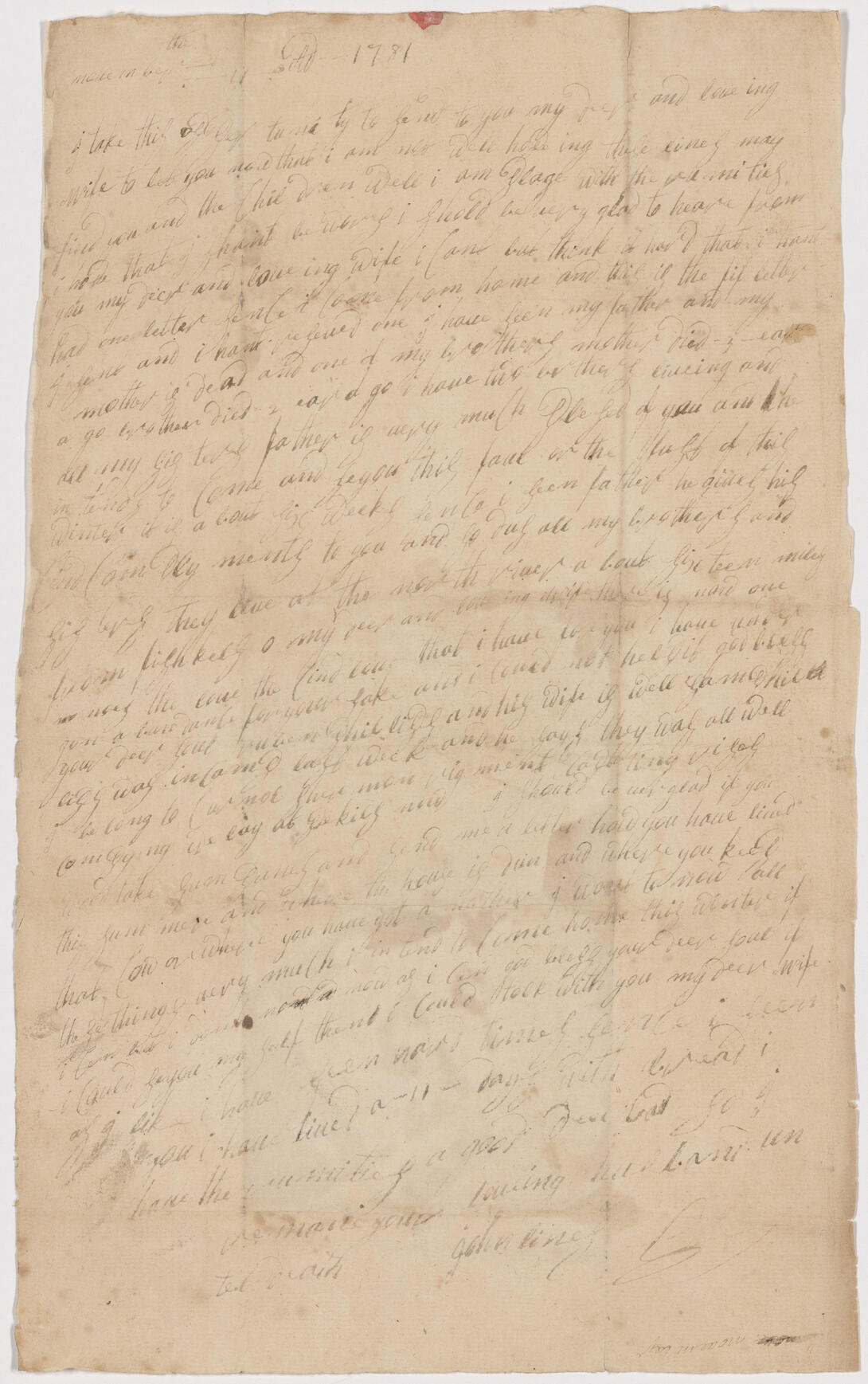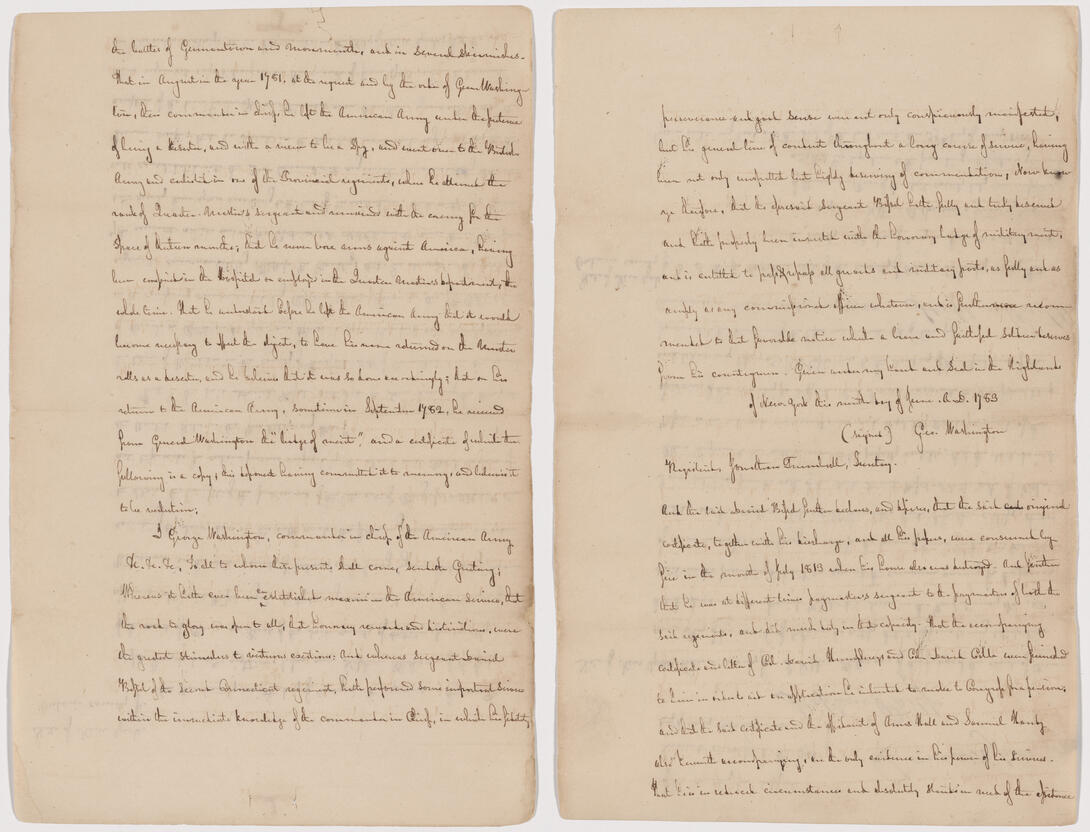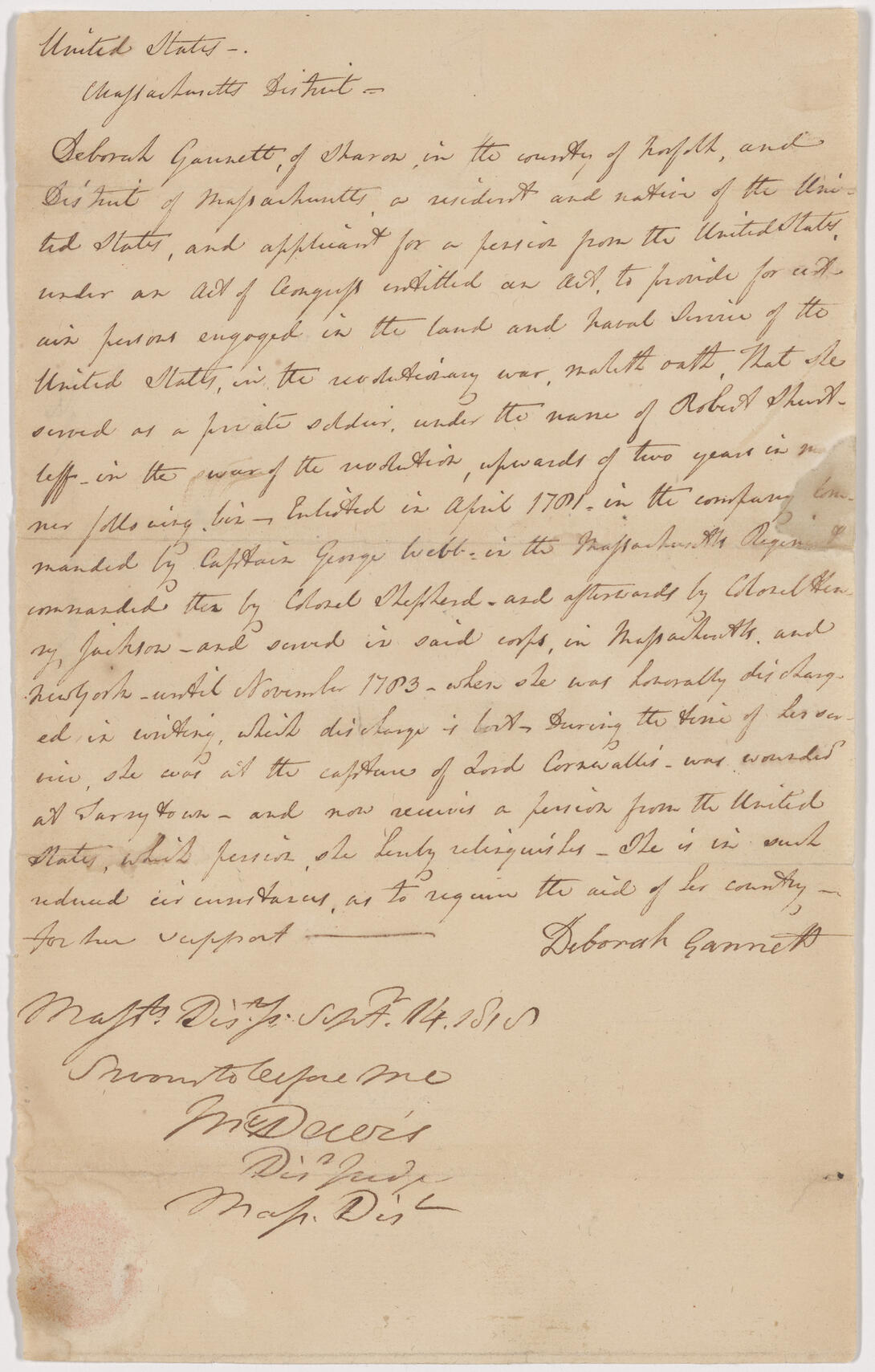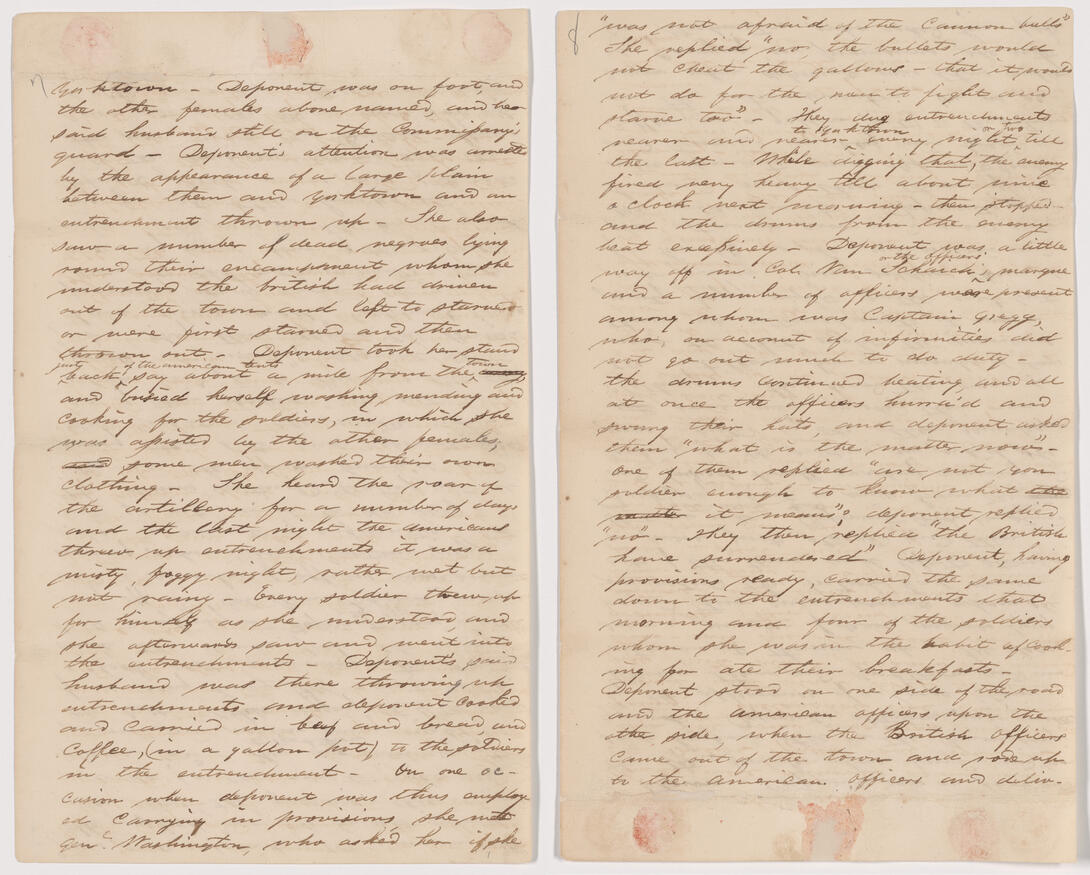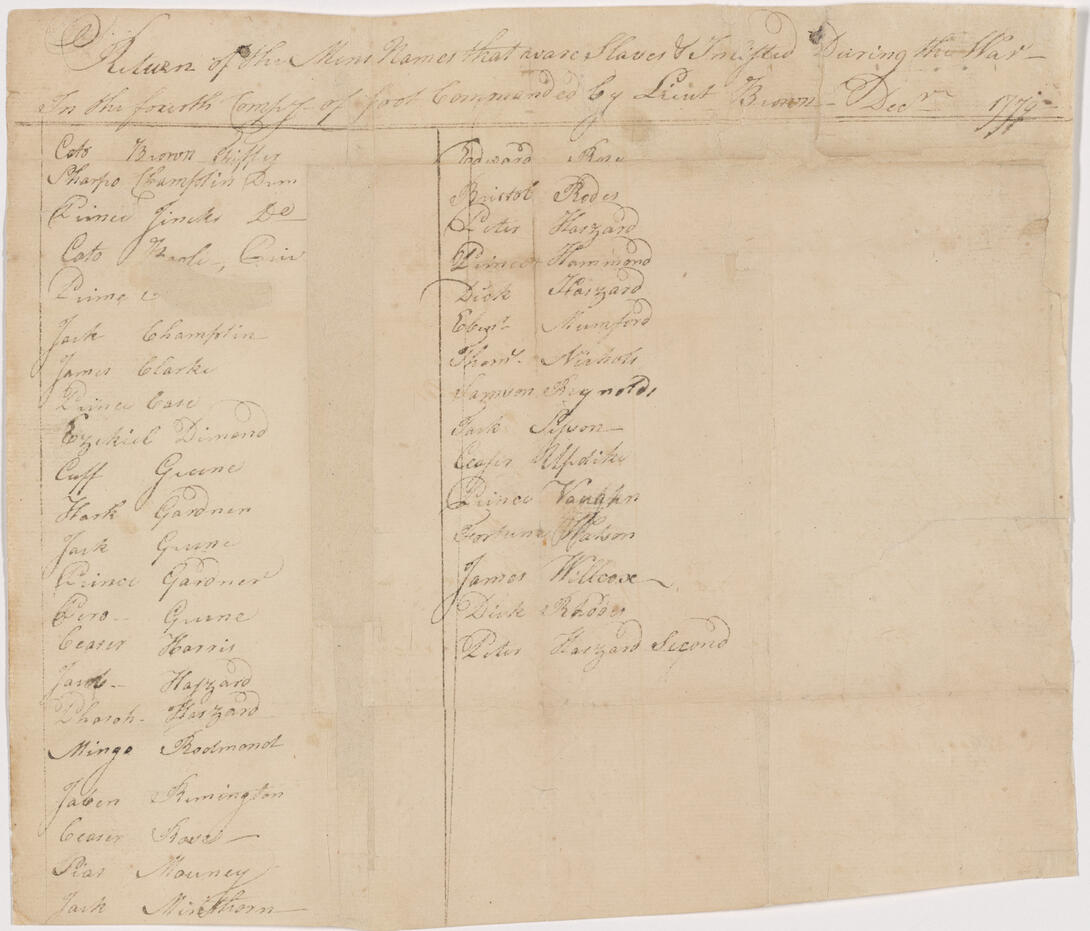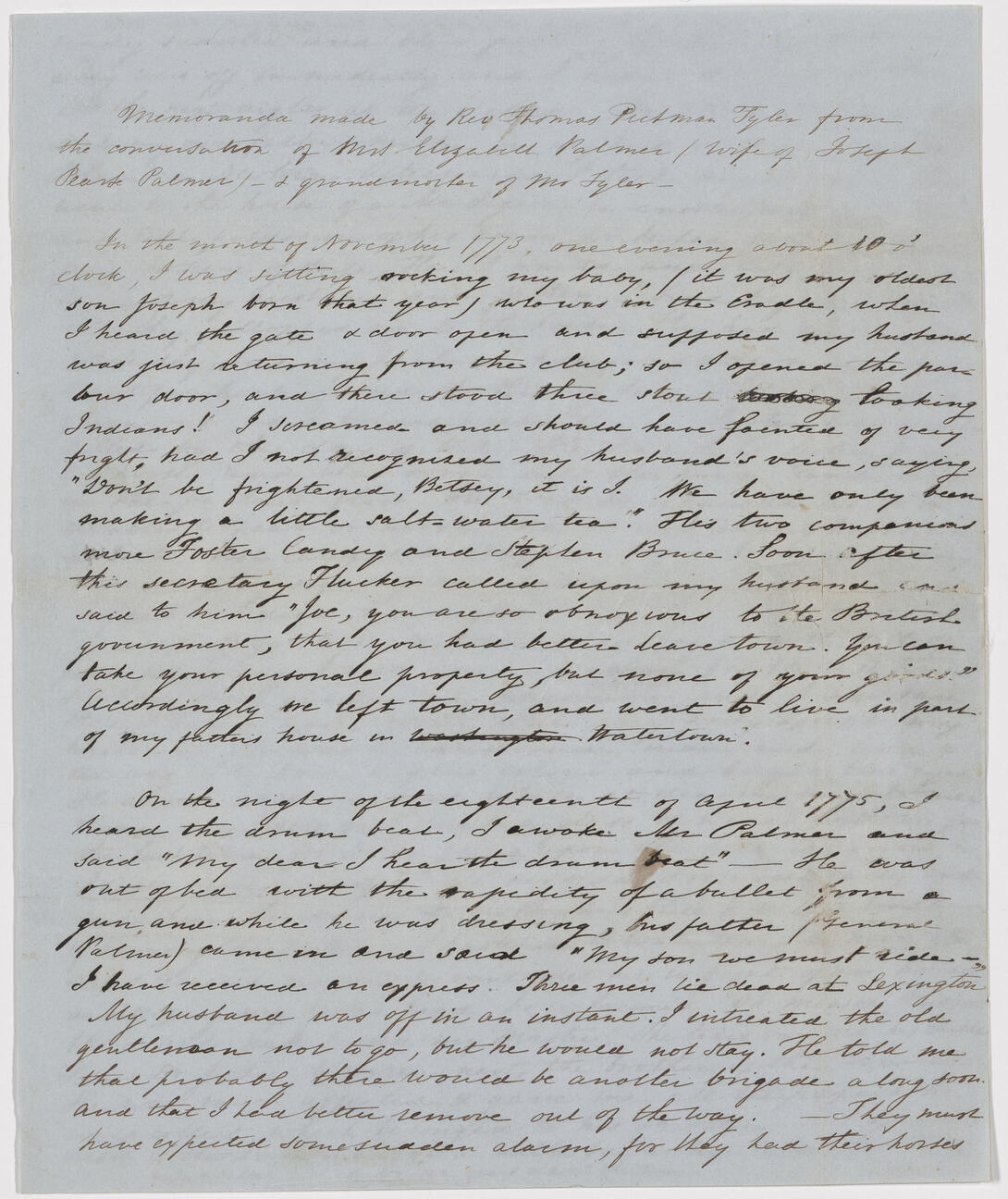The Revolution's Impact on American Society
The Revolutionary War touched every aspect of American society and brought a broad spectrum of men and women to the frontlines. Officers and enlisted soldiers distinguished themselves in battle, and allied forces helped to secure an American victory.
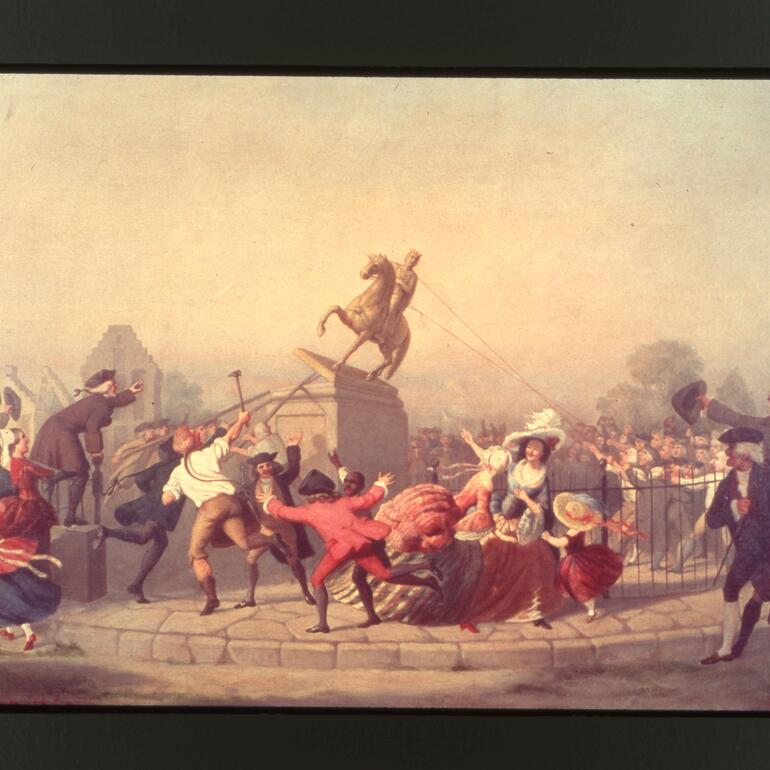
-
This letter from Private John Lines to his “deer [sic] and loving wife” wife Judith is one of the few Revolutionary War letters by a Black soldier that is known to exist. Lines’s letter documents the “hard times” of life in the Continental Army. His plea to Judith for news about their farm also reveals the economic partnership at the heart of many Revolutionary-era marriages. While men fought at war, women found the means to support their households and protect their families.
Letter from Private John Lines to Judith Lines, November 11, 1781. Records of the Department of Veterans Affairs
-
Sergeant Daniel Bissell was the last of three soldiers known to be awarded the Badge of Military Merit by General George Washington. In 1781, Washington selected Bissell to spy on the British. He passed intelligence from behind enemy lines for 13 months. Bissell lost his military citation in a fire, but reproduced it nearly exactly in his 1820 pension application. The Military Badge of Merit was renamed the Purple Heart in honor of Washington’s 200th birthday.
Sergeant Daniel Bissell’s Pension Application, May 26, 1818. Records of the Department of Veterans Affairs
-
Few women bore arms in the Revolutionary War and even fewer served as soldiers. One exception was Deborah Sam(p)son, the only woman awarded a full military pension. Disguised as a man, Samson enlisted in the 4th Massachusetts Regiment under the alias Robert Shurtliff. A poor single woman, Samson’s motivations for enlisting were likely both economic and patriotic. Despite receiving multiple battle wounds, she served undetected for “upwards of two years…when she was honorably discharged” after her identity was discovered. Samson married Benjamin Gannett following the war.
-
Women were officially barred from military service, but thousands served the military by cleaning, cooking, and caring for soldiers. Like most Army women, Sarah Osborn traveled with Continental troops for financial reasons and to remain close to enlisted male kin. A typical Army woman in most respects, her eyewitness account of the Battle of Yorktown reveals a remarkable encounter. While carrying provisions to the frontline, General George Washington asked her, “Are you not afraid of the cannonballs?” Osborn replied, “It would not do for the men to fight and starve, too.”
-
The 1st Rhode Island Regiment included approximately 5,000 Black men, including many slaves, like those listed here. They primarily enlisted to secure their own freedom, which was promised in return for their service.
1st Rhode Island Regiment, Return of Men's Names that were Slaves during the War in the 4th Company Commanded by Lieutenant Brown, 1779. ...Read more
1st Rhode Island Regiment, Return of Men's Names that were Slaves during the War in the 4th Company Commanded by Lieutenant Brown, 1779. War Department Collection of Revolutionary War Records
Read less -
While male family members went to war, their wives, daughters, and mothers took command of households. This statement recounts Elizabeth Palmer’s anxiety as her husband and father rode off to Lexington and Concord, and a terrifying encounter the night of the “Boston Tea Party.” At home with her baby, Palmer heard a noise outside. She screamed after coming face-to-face with three “Indians” until she “recognized [her] husband’s voice, saying, ‘Don’t be frightened…we have only been making a little salt-water tea.’”
-
The Revolution's Impact on American Society is part seven of Road to Revolution, a series of displays highlighting National Archives records that document the journey from colonial resistance to American independence and the diverse experiences of the nation's founding generation.
Road to Revolution is made possible in part by the National Archives Foundation, through the generous support of Comcast Corporation, Microsoft, and Procter & Gamble.






